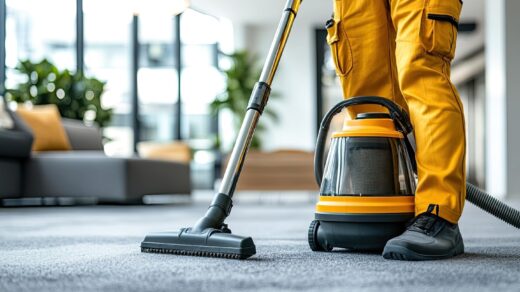
Every commercial facility, from bustling warehouses to sterile laboratories, requires work surfaces that combine strength, hygiene, and long-term reliability. Stainless steel workbenches have earned a reputation as the gold standard in these environments, delivering unmatched durability and cleanliness while projecting a professional image. For organizations considering how best to equip their spaces, Global Industrial reviews how stainless steel workbenches represent not just a purchase, but a lasting investment.
Hygiene and Sanitation at the Forefront
Cleanliness is a critical concern across industries, especially in sectors where contamination can jeopardize safety and compliance. Stainless steel, with its non-porous surface, eliminates the risk of harboring bacteria, mold, or other contaminants. This characteristic makes it ideal for spaces such as food processing facilities, medical centers, and research laboratories.
Unlike wood or laminate surfaces that can absorb moisture and allow bacteria to fester, stainless steel can be easily wiped down, disinfected, and sterilized. These workbenches align perfectly with strict industry sanitation standards, ensuring safe handling whether the task involves surgical tools, food preparation, or scientific testing.
Built for Strength and Longevity
Stainless steel workbenches are synonymous with durability. Their resistance to rust, corrosion, and impact damage makes them a reliable choice in high-demand environments. Unlike wood, which chips, warps, or degrades over time, stainless steel maintains its integrity even under punishing conditions.
For facilities where heavy tools, machinery, and constant movement are daily realities, stainless steel workbenches offer a rugged, heavy-duty solution. The reduced need for replacement and minimal maintenance translate into significant long-term cost savings, proving that resilience is an investment in itself.
Resistance to Chemicals and Temperature Extremes
In many workplaces, fluctuating temperatures and exposure to chemicals are part of the daily routine. Stainless steel is engineered to withstand extremes of hot and cold without warping or cracking. It also resists the corrosive effects of solvents and cleaning agents that would quickly degrade other materials.
This makes stainless steel particularly valuable in laboratories, maintenance shops, and production facilities where spills and sterilization procedures are common. The material’s inert quality ensures that work surfaces remain stable and reliable even in environments prone to chemical or thermal stress.
A Versatile Workbench for Diverse Applications
No two facilities are exactly alike, and workflows often require flexible equipment. Stainless steel workbenches adapt seamlessly to different tasks, whether used for assembling electronics, preparing meals, storing tools, or conducting experiments. Configurations can include shelving for organization, backsplashes for cleanliness, or casters for mobility.
The adaptability of stainless steel ensures that a single investment can serve multiple departments or functions, accommodating evolving operational needs without requiring constant reinvestment in new surfaces.
Style Meets Functionality
Beyond function, appearance matters—particularly in customer-facing environments such as commercial kitchens, tech labs, or showrooms. Stainless steel’s sleek, modern aesthetic communicates professionalism and high standards. Its clean lines and reflective surfaces contribute to an atmosphere of order and efficiency, reinforcing trust in the quality of work being performed.
Cost-Effectiveness Over Time
While stainless steel workbenches may demand a higher upfront cost compared to wood or laminate alternatives, their extended lifespan and minimal upkeep make them a cost-effective choice in the long run. Facilities save money by avoiding frequent replacements and reducing maintenance costs, allowing resources to be allocated to more critical areas of business growth.
In essence, stainless steel is not just about durability—it’s about value. The return on investment becomes increasingly apparent as years of use demonstrate its endurance.
Industry-Specific Advantages
Different industries have unique demands, yet stainless steel proves beneficial across the board:
- Construction: Resistant to heavy wear, corrosion, and frequent cleaning, stainless steel supports long-term use under rugged conditions.
- Warehousing and Material Handling: Its durability and adaptability make it suitable for packaging, equipment prep, and mobile workstation needs.
- Food Processing: Hygienic properties ensure compliance with food safety regulations, protecting both raw ingredients and finished goods.
- Medical Facilities: Stainless steel withstands sterilization processes and harsh cleaning agents without compromising surface quality.
- Laboratories: Resistant to chemicals and heat, stainless steel offers a stable, inert surface for sensitive experiments.
- Garages and Workshops: Capable of absorbing heavy impacts and daily wear, stainless steel provides reliability for mechanics and technicians alike.
Adaptable to Environmental Challenges
Stainless steel thrives in demanding environments where moisture, dust, or harsh conditions pose risks to other materials. Its rust resistance makes it invaluable in humid areas, while its easy-to-clean surface promotes efficiency in dusty or messy workplaces. Facilities exposed to fluctuating conditions—whether thermal, chemical, or both—benefit from its consistency and resilience.
Long-Term Investment in Facility Performance
For decision-makers tasked with equipping commercial spaces, stainless steel workbenches represent a commitment to performance, efficiency, and long-term cost savings. Their unmatched durability and adaptability reduce downtime and replacement costs, while their sleek appearance projects professionalism.
From stationary models that anchor heavy-duty work areas to mobile options that support flexible workflows, stainless steel workbenches provide solutions tailored to virtually every industry. Adjustable-height designs enhance ergonomics, while storage-equipped models keep operations organized and efficient.
Ultimately, investing in stainless steel is not just about selecting a work surface—it is about future-proofing a facility. Organizations that prioritize hygiene, resilience, and long-term value find stainless steel to be a clear and compelling choice.



